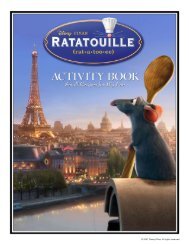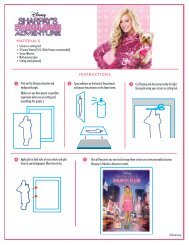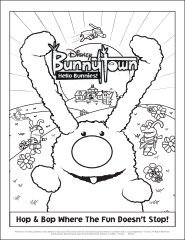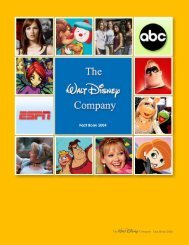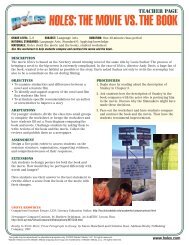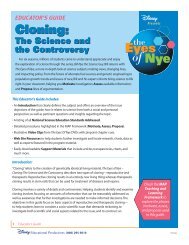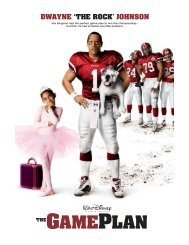1 CARS PRODUCTION INFORMATION After taking ... - Disney
1 CARS PRODUCTION INFORMATION After taking ... - Disney
1 CARS PRODUCTION INFORMATION After taking ... - Disney
Create successful ePaper yourself
Turn your PDF publications into a flip-book with our unique Google optimized e-Paper software.
Milliron’s group was also responsible for the crowds of cars that inhabit<br />
the stands at the film’s opening and ending race sequences. With 120,000 cars in<br />
the stands, and an additional 2000 in the infield, this easily qualifies as the biggest<br />
crowd scenes ever done at Pixar (far surpassing the milling ants in “A Bug’s<br />
Life”). Complicating the situation, all of the vehicles in this crowd have some<br />
animation on them.<br />
To help capture the thrills and excitement of the film’s racing scenes,<br />
Jeremy Lasky, the director of photography responsible for camera and layout,<br />
and his team visited many car races, and had extensive talks with the camera<br />
experts who photographed such events. Veteran Fox Sports director Artie<br />
Kemper, a pioneer in televising car races, proved to be a great source of<br />
information.<br />
According to Lasky, “Artie gave us really great notes about where he<br />
would typically place his cameras on the track. He also talked about shots that<br />
he wished he could get. We were able to do a lot of things that were impossible<br />
for him to do. We could put a camera under the car, place one on the middle of<br />
the track, set up a crane shot that comes down and have the cars race right over<br />
the top of the cameras. Artie told us that he wished he had those toys. The<br />
camera placement in ‘<strong>CARS</strong>’ allowed us to put the audiences right in the middle<br />
of the excitement. We put them into a world they were familiar with, and then<br />
we hit them with shots that they’ve never seen. The film has these spectacular<br />
moments where the cars are ripping two millimeters past the camera lens, which<br />
is impossible in live-action, and we set it up for them to believe it’s possible.”<br />
Even in the more calm and serene setting of Radiator Springs, some<br />
impressive achievements were accomplished.<br />
One of the film’s most stellar and complex moments occurs at the end of<br />
Act II, where the neon lights are turned on again, as the town is revitalized and a<br />
parade of cars cruise down Main Street. With its bright, bold, brilliant lights<br />
coming from numerous sources and accompanying reflections, this sequence<br />
proved to be enormously complicated but one of the film’s most rewarding and<br />
luminous moments.<br />
To enhance the richness and beauty of the desert landscapes surrounding<br />
Radiator Springs, the filmmakers created a department responsible for matte<br />
paintings and sky flats. Technical director Lisa Forsell and her team worked<br />
their magic in this area.<br />
“Digital matte paintings are a way to get a lot of visual complexity<br />
without necessarily having to build complex geometry, and write complex<br />
shaders,” says Forsell. “We spent a lot time working on the clouds and their<br />
different formations. They tend to be on several layers and they move relative<br />
to each other. The clouds do in fact have some character and personality. The<br />
notion was that just as people see themselves in the clouds, cars see various carshaped<br />
clouds. It’s subtle, but there are definitely some that are shaped like a<br />
sedan. And if you look closely, you’ll see some that look like tire treads.<br />
“The fact that so much attention is put on the skies speaks to the visual<br />
level of the film,” she adds. “Is there a story point? Not really. There is no pixel<br />
20






